1
HOME > Tips & Advice >
SO, WHAT MAKES A GOOD MEN'S BOARDSHORT?
HOW TO SHOP FOR TRADITIONAL SWIM TRUNKS AND BOARDSHORTS
Written by Ivan Yaskey in Tips & Advice on the 10th July 2018
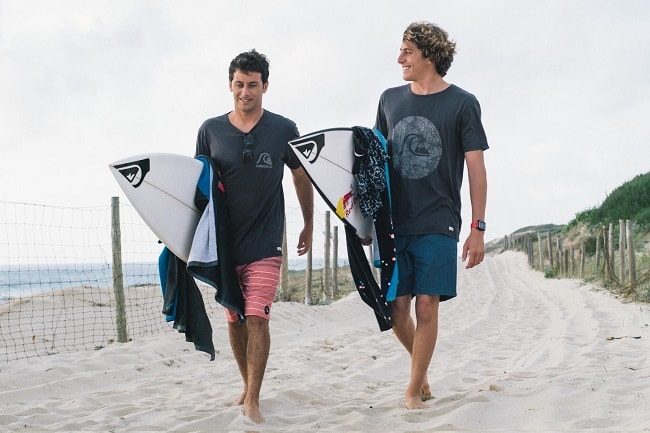
You’ve got choices for swimwear. Or, more specifically, you’ve got three major categories to choose from: traditional swim trunks (which often look like something your dad wears), ultra-tiny Speedos (only truly practical if you swim professionally) and the boardshort (a surfer style that’s a practical choice for the average guy). This guide won’t focus on the benefits and drawbacks of these three. Rather, as more and more opt for the slimmer, stretchier boardshort, we’re going to cover every basic factor you’ve got to consider. Developed initially for board sports, from surfing through paddleboarding, board shorts run minimal but not skimpy. The design uses less material – that way, they won’t catch onto something – yet typically has enough protection to prevent any irritation from board wax.
What results is typically a polyester or nylon blend with some elastane included for that extra degree of stretch. Unlike trunks, most don’t have that light, shiny look. Instead, the material seems a little more structured, looks like brushed twill and has a softer hand-feel, but let’s your body move a bit more naturally. As well, styles generally feature a combination of a drawstring closure, a Velcro fly, mesh lining, pockets and drainage ports. The physical features are just part of the picture, though. Men’s swimwear has trended more toward land-to-water styles, and your boardshorts, as such, not only need to look like actual chino shorts, but should also shed water quickly once you’re back on the shore and headed toward the bar. As such, brands rarely skimp on quick-dry, water-repellent treatments. Otherwise, you’ve got to contend with bunched up, wet garments for the next hour. Within this framework, you’ve got a range of fits, patterns, and constructions. Some are better for the surfers out there and others designed for the guy spending more time on the shore.
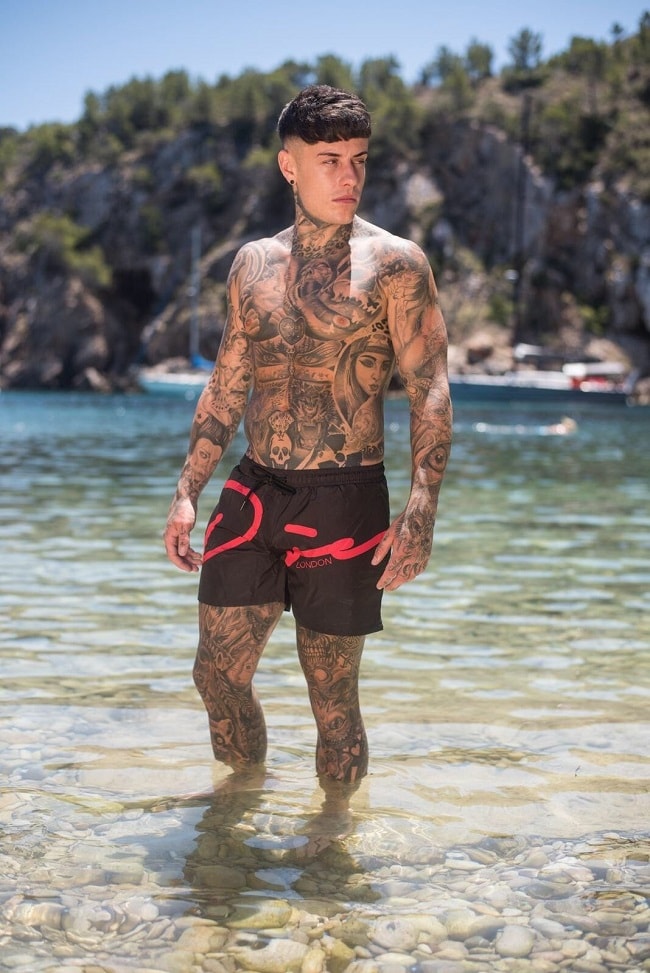
The Right Fit
However you spend your summer months, nothing kills your energy like boardshorts that don’t fit. Too baggy, and you’ll feel like you’re wearing soaked-through cargos. Too tight, and that ride-up and wedgie becomes inevitable. Instead, think of your boardshorts as an investment piece: It’s one style you’ll use over and over, during the course of a few years. First, look for a silhouette that mirrors your chino shorts: Slightly tapered, always above the knee, and with just enough room to move. A pair shouldn’t hug your thighs, but it shouldn’t hang from your waist like a skirt, either. Along with these points, think about the waist. Velcro with a drawstring is traditional, and ideal for those with straight, if not sculpted, torsos. For a bit more literal wiggle room, opt instead for the elastic waistband.
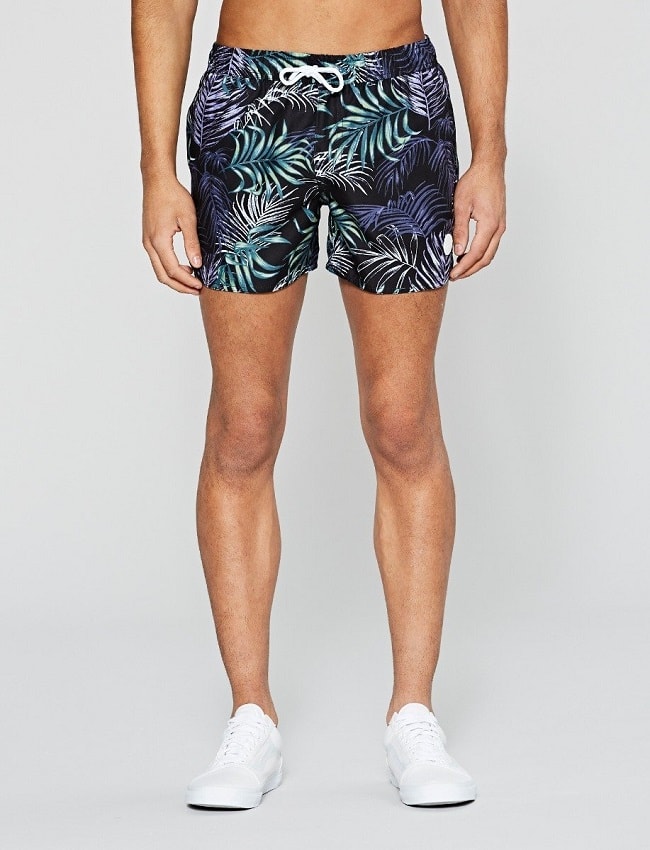
Technical Uses
At its core, the boardshort is a technical garment, one offering surfers a closer, flexible fit and water-repellent properties without the full-body clinginess of a wetsuit. Through this context, a purely technical boardshort needs length: above the knee or even covering. Yet, the design should never be too billowy to catch onto or get tangled with something (control is absolutely key). Added to this, you can’t not think about stretch materials. The standard is two-way stretch – enough to move if you’re casually surfing or paddle boarding. More advanced designs from Billabong and O’Neill, on the other hand, opt for four-way stretch, or flexibility that extends in all directions. If you’ve got more active pursuits in mind for summer, this second option is the way to go.

Land-to-Water and Back
Most of us won’t be surfing out – although a bold-coloured, striped, or floral-based print often gives off that impression. Rather, your seaside – or even poolside – jaunts take you multiple places, and who wants to keep on changing? In response, the land-to-water short – sometimes called 'amphibian,' 'amphibious,' or 'submersible' – has seen its presence grow over the past few years. What differentiates this style from traditional boardshorts? For one, it’s a true hybrid. The exterior looks casual and unassuming – think chinos or even cargos – but water-resistant properties, stretch construction, and thinner microfiber materials make it feel and perform like a pair of boardshorts. As such, no one can quite tell you’re walking around basically in swim trunks, you’ve got something for taking a dip in the ocean, and whenever you’re ready to find a spot for a slice or drink, you won’t be walking around dripping wet from the waist down.
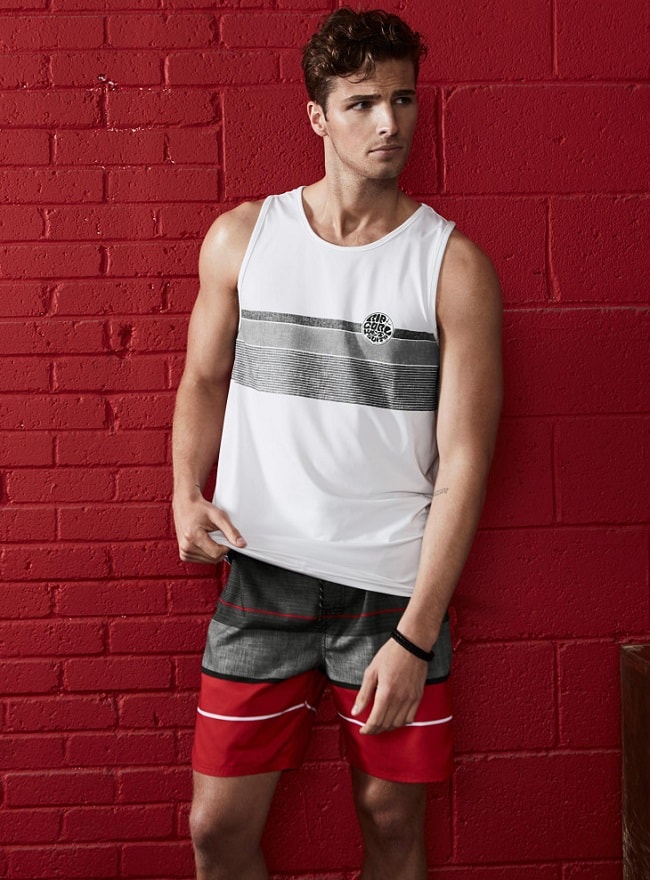
Quality
Back to that bit about boardshorts being an investment piece. If you’re truly looking for quality construction, as opposed to a once-and-done-for-the-summer piece, you’ve got to look for a handful of attributes. One; look at the mesh lining inside. If it’s as flimsy as a pair of high school gym shorts, it’ll rip and fray after a few wears. Two; check the drainage ports. For higher-quality options go for metal, as opposed to a stitched hole. Third; Velcro’s a contentious feature. Some avoid it at all costs, opting for a pull-on design with a drawstring. Others, however, consider it essential if the shorts don’t have an elastic waistband. All in all, consider trying on a few styles to find what fits well.
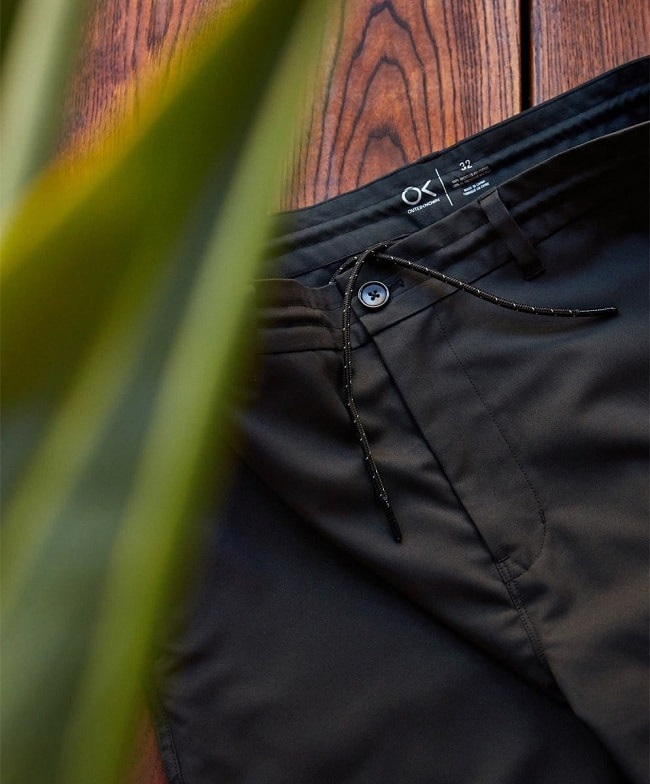
Length
How long – or short – should you go? As a guideline, many boardshorts’ outseams vary from 19 to 22 inch long. Unsure about where that will fall on you? Just measure from above the hips – roughly two to three inches – and down. If it’s covering or falling below your knee, the style’s too long. Yet, last year, menswear designers became enamoured with the shorter short, and in response, this length now influences swimwear styles. Some say the shorter length ultimately makes your legs look longer. As a general guideline, the shorter boardshort should extend no more than two to four inches above your knee cap. Inseam wise, taller men should think about a 6 or 7 inch inseam; if you’re on the shorter side, 4 or 5 inch might be more proportional. But, in speaking about proportions, your waist plays another factor. Having a wider waist and shorter inseam looks off-kilter – not to mention, you’re approaching Speedo territory. Instead, the rule here is, the wider your waist, the longer your inseam should be.

Guys what are you wearing in this heat? #heatwave
— Menswear Style (@MenswearStyle) July 10, 2018

Trending
2
3
4
5
6
7
8
9
10










